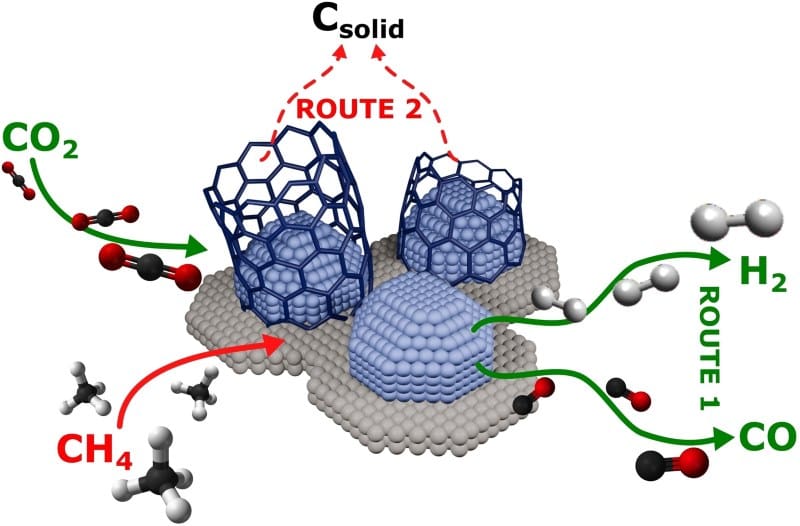Researchers at the Politecnico di Milano’s Department of Energy have made a significant stride in combating climate change.
Their latest study, featured in Angewandte Chemie, presents new methods to enhance the efficiency of converting two key greenhouse gases, methane (CH4) and carbon dioxide (CO2), into valuable energy resources using the Dry Reforming process. This development offers potential for reducing the environmental impact of these gases while generating energy more sustainably.
Led by Professor Matteo Maestri, the study focused on using supported metal nanoparticles as catalysts to transform methane and carbon dioxide into synthesis gas, a key resource in hydrogen production and other chemical industries. However, carbon build-up on the catalysts has been a significant hurdle, limiting their efficiency and scalability.

By employing operando Raman spectroscopy, an advanced technique that allows real-time analysis of catalysts during chemical reactions, the research team uncovered a crucial relationship between the ratio of carbon dioxide to methane and the rate of carbon formation. This insight could be a game changer in extending the life of catalysts and making Dry Reforming more viable for large-scale use.
“Our work allowed us to observe how a catalyst transforms during the reaction,” explained Prof. Maestri. “Knowing this will help us improve the efficiency of catalysts, with a potentially significant impact on the reduction of greenhouse gas emissions and long-term energy sustainability.”
This breakthrough could lead to longer-lasting, more efficient catalysts, enabling wider adoption of Dry Reforming to reduce methane and CO2 emissions. These findings have far-reaching implications for the hydrogen and biogas sectors, where sustainable technologies are in high demand.
The research could help industries transition to cleaner, more energy-efficient technologies. Methane, in particular, is a potent greenhouse gas with a significantly higher global warming potential than CO2, making its efficient conversion into energy critical for meeting global climate targets.
By addressing the issue of carbon build-up, the Politecnico di Milano study offers a promising new avenue for reducing greenhouse gas emissions, with potential long-term benefits for energy sustainability and environmental protection.
Journal Reference:
Riccardo Colombo, Dr. Gianluca Moroni, Dr. Chiara Negri, Dr. Guusje Delen, Dr. Matteo Monai, Prof. Dr. Alessandro Donazzi, Prof. Dr. Ir. Bert M. Weckhuysen, Prof. Dr. Matteo Maestri, ‘Surface Carbon Formation and its Impact on Methane Dry Reforming Kinetics on Rhodium-Based Catalysts by Operando Raman Spectroscopy’, Angewandte Chemie International Edition (2024). DOI: 10.1002/anie.202408668
Article Source:
Press Release/Material by Politecnico di Milano
Featured image credit: Politecnico di Milano




